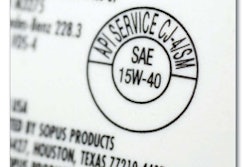New truck emissions rules claim fuel consumption reductions, cost savings
By Marcia Gruver Doyle
Diesel use would be cut by 4 gallons per 100 miles traveled, yielding a total fuel savings of $73,000 over a truck’s life, according to calculations used in the first-ever truck fuel consumption and greenhouse gas (GHG) emissions regulation, announced by President Obama on August 9.
 The Obama Administration says the new truck rule will save truck owners an estimated $50 billion in fuel costs over the lifetime of trucks built for model years 2014-2018. The cost? An estimated $8 billion.
The Obama Administration says the new truck rule will save truck owners an estimated $50 billion in fuel costs over the lifetime of trucks built for model years 2014-2018. The cost? An estimated $8 billion.The new Heavy-Duty National Program rules will involve three truck categories. (See chart on page 50) EPA’s GHG emission standards will begin with the 2014 model year. The National Highway Traffic Safety Administration’s fuel consumption standards will be voluntary in model years 2014 and 2015, but mandatory for most categories beginning in the 2016 model year. A second phase of regulations is planned for model years beyond 2018.
“While we were working to improve the efficiency of cars and light-duty trucks, something interesting happened,” said President Obama. “We started getting letters asking that we do the same for medium- and heavy-duty trucks. They were from the people who build, buy and drive these trucks.”
The Administration says the program will rely heavily on off-the-shelf technologies and was developed in conjunction with truck and engine manufacturers, fleet owners, the state of California, environmental groups and others.
Indeed, truck and engine manufacturers had mild reactions to the rule. “Our past success gives us confidence we’ll meet the challenge,” said Denny Slagle, Mack president and CEO. “Our focus now is on doing so in way that minimizes any negative consequences for our customers.” From Cummins: “The emissions technologies in use today provide the foundation for meeting the 2014 standards, and Cummins is ready to meet this regulation in 2013,” said Rich Freeland, vice president and president, engine business.
And Navistar: “With this rule, EPA and the NHTSA have now set an example for what could be a worldwide GHG and fuel efficiency regulation for heavy trucks and engines,” commented Daniel C. Ustian, chairman.
The rules, which are expected to become effective this year, were developed jointly by the Environmental Protection Agency and the U.S. Department of Transportation because “heavy-duty trucks are the fastest-growing contributors to GHG emissions within the transportation sector,” says a fact sheet released with the announcement. While trailers and bodies were not included in this rulemaking, EPA warned they will be included in future rules because of their impact on fuel consumption.
Heavy-duty pickup trucks will meet targets for gallons of fuel consumed per mile as well as grams of carbon dioxide per mile. The other two categories of trucks – heavy duty and vocational – will meet targets for gallons of fuel consumed and GHG emission per ton-mile. EPA claims the majority of vehicles covered under the rules will see a payback (through fuel savings) within one year. Owners using trucks with lower annual miles will see paybacks in two years.











